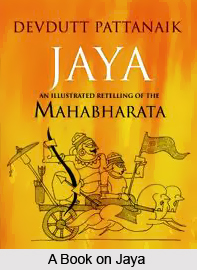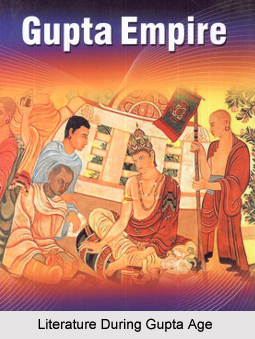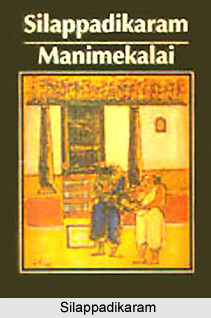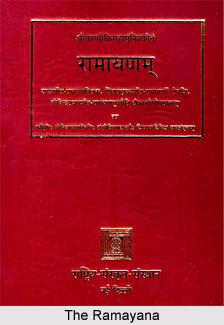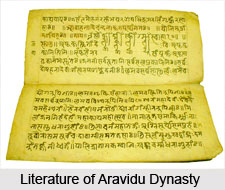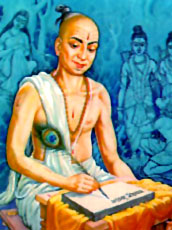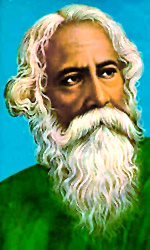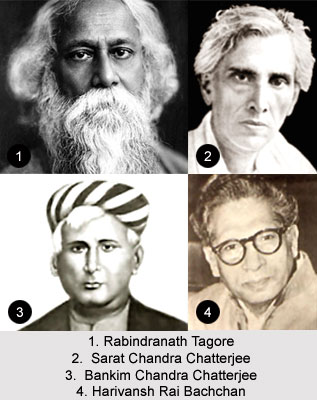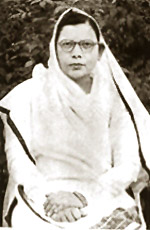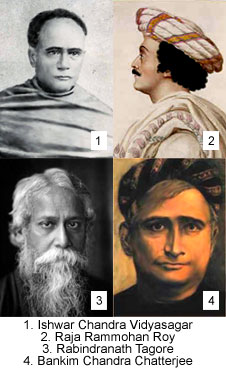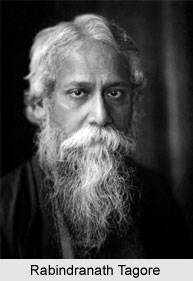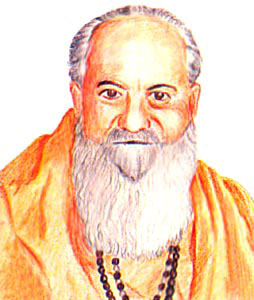 Swami Ramanand was the fountain of inspiration for the emergence of Rasik Sampradaya. He had propagated progressive ideologies in the social, religious and devotional fields in Northern India. It was he who opened the door of Bhakti for every one without any distinction of caste or status. Prior to him, Ram Bhakti did not attain the form of any sampradaya. He did not find any sampradaya himself, but sampradayas were, however, later founded by persons in his tradition. He was the first Acharya of Ram Bhakti, in which not much importance is given to `gyan` and `karma`. It is sufficient for the Bhakti to surrender himself completely at the feet of the Lord who is all kind and is only fond of love. He was a follower of Visistadwaitvad. For Ramanand what was important was Bhakti, not metaphysics or philosophical speculations. In the Vairagi tradition of Ramanand, the Galta tradition is known as Tapsi-Sakha. The literature of this branch is mostly in Braj.
Swami Ramanand was the fountain of inspiration for the emergence of Rasik Sampradaya. He had propagated progressive ideologies in the social, religious and devotional fields in Northern India. It was he who opened the door of Bhakti for every one without any distinction of caste or status. Prior to him, Ram Bhakti did not attain the form of any sampradaya. He did not find any sampradaya himself, but sampradayas were, however, later founded by persons in his tradition. He was the first Acharya of Ram Bhakti, in which not much importance is given to `gyan` and `karma`. It is sufficient for the Bhakti to surrender himself completely at the feet of the Lord who is all kind and is only fond of love. He was a follower of Visistadwaitvad. For Ramanand what was important was Bhakti, not metaphysics or philosophical speculations. In the Vairagi tradition of Ramanand, the Galta tradition is known as Tapsi-Sakha. The literature of this branch is mostly in Braj.
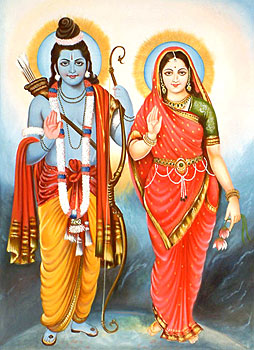 Out of the eight prominent disciples of Anantanand, particularly notable are Krisnadas Payhari, Agradas and Karamchand. Krishnadas, a Dahima Brahmin of Rajasthan, established for the first time the Gaddi of Ramanand Sampraday at Galta near Jaipur. From his book Rajyog, it appears that he was a propagator of the philosophy of Sankhya Yoga. This seat was formerly under the control of Kanphata Nath Jogis, but Krisnadas by displaying his Yog-Siddhi outwitted them and occupied it. This was also one of the reasons why the yog-sadhana entered into his tradition.
Out of the eight prominent disciples of Anantanand, particularly notable are Krisnadas Payhari, Agradas and Karamchand. Krishnadas, a Dahima Brahmin of Rajasthan, established for the first time the Gaddi of Ramanand Sampraday at Galta near Jaipur. From his book Rajyog, it appears that he was a propagator of the philosophy of Sankhya Yoga. This seat was formerly under the control of Kanphata Nath Jogis, but Krisnadas by displaying his Yog-Siddhi outwitted them and occupied it. This was also one of the reasons why the yog-sadhana entered into his tradition.
Two famous disciples of Ramanand were Kilhadas and Agradas. Kilhadas was also inclined towards yoga sadhana besides Ram Bhakti, and this was the main reason why he was made the Acarya of Galta Gaddi. Agradas on the other hand had propounded the Rasik Sampraday in various parts of Rajasthan. Originating in Rajasthan, the Rasik Sampraday travelled to and flourished at Ayodhya, Janakpur and Chitrakut, places more connected with the Yugal-Swarup of Lord Rama and Sita. It could not gain much ground in Rajasthan as the `maryada`, heroic and redeemer aspects of the incarnations of the divine found more acceptance here.
The Rasik tradition continued only in a slender way till the 17th century. After the death of Aurangzeb, in the beginning of the 18th century, it started flourishing again. The literature of this Sampraday is mostly in Braj, Awadhi and Awadhi mixed with Maithili, but a few poets such as Siyasakhi and Kriparam have also composed verses in Rajasthani and Rajasthani mixed with Braj. The last important poem of this tradition is Ram Ras composed in Braj by Rupdevi in 1861. Siyasakhi, a Gaud Brahmin of Badaganv was a poet of the first half of the 18th century. Krparam was living in the latter half of the 18th century.
The traditions of both these branches continued mainly in the Jaipur region and outside Rajasthan.
